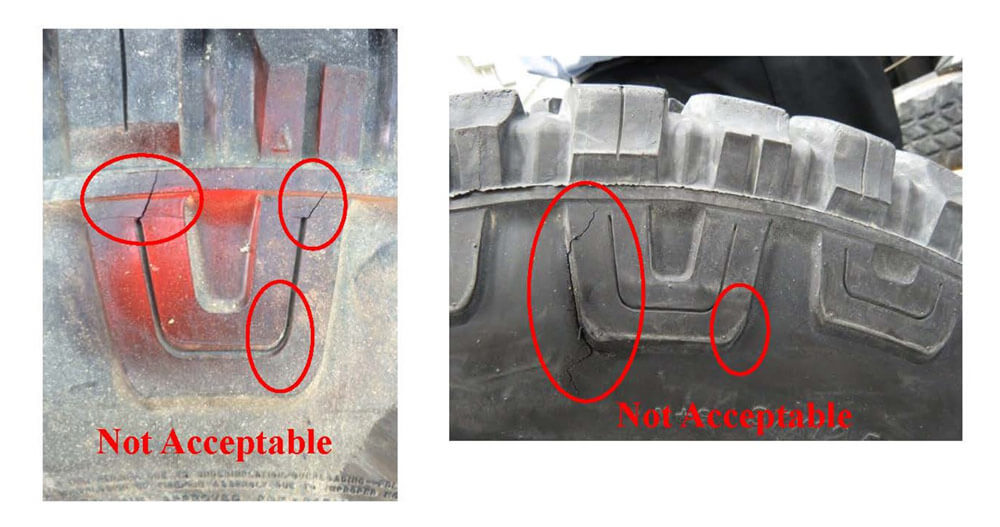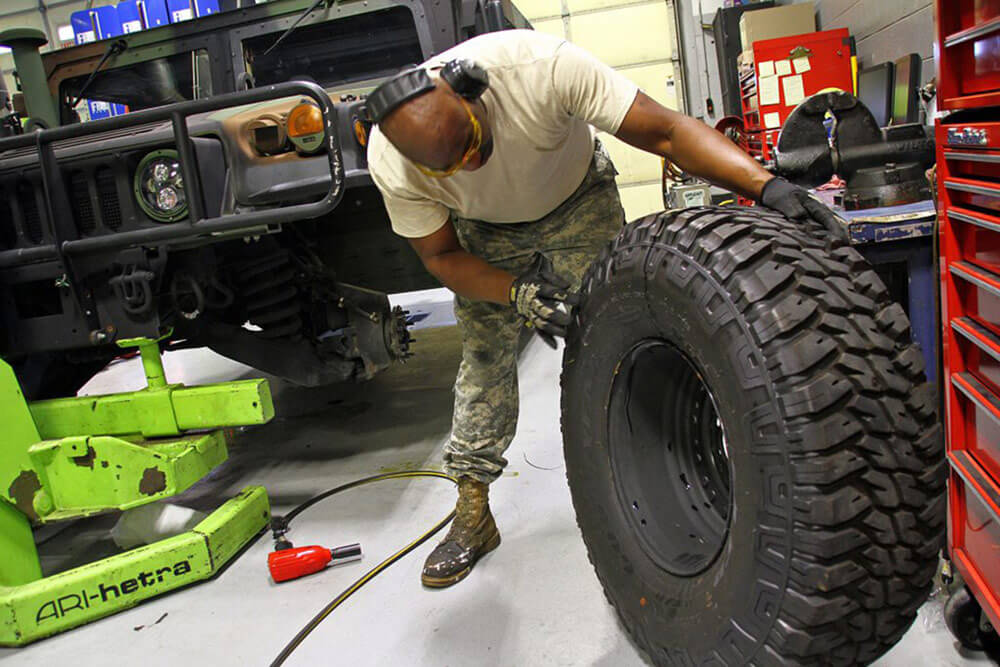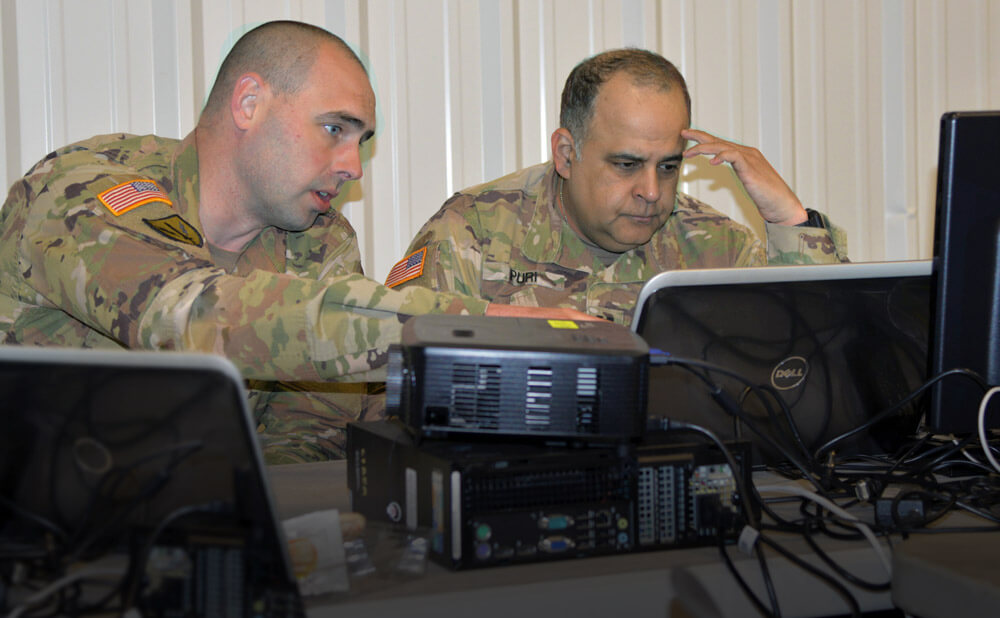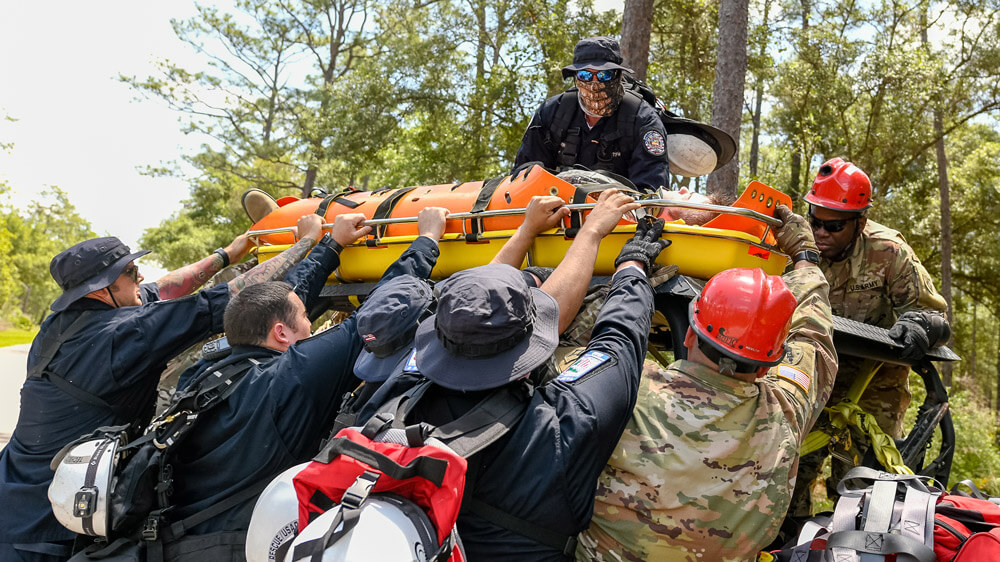CW2 Stephen Plouvier, of the Kentucky Army National Guard’s 203rd Forward Support Company, discovered a defect in tires, leading to a potential life-saving safety directive last spring.
The Safety of Use Message (SOUM) – which was sent out across all branches of service to include National Guard, active and Reserve – said: “Warning: death, serious injury or damage to Army equipment will occur if actions specified are not implemented.”
The safety message stated the tire defect was related to sidewall cracking in specified tires that could lead to tire failure. The message explained that the defect increased the risk of a “sudden blowout” and the potential for “an accident or rollover which could result in serious injury or death.” The directive said the defective tires “must be removed.”
Nationwide, numerous High Mobility Multipurpose Wheeled Vehicle (HMMWV) accidents and blowouts had occurred and may have been attributed to the defect.
In the Kentucky National Guard alone, more than 1,200 tires were considered damaged and had to be replaced. Nearly 50 percent of HMMWVs were involved, and almost every National Guard unit in Kentucky was affected. Across the country, over 32,000 wheel-assemblies needed to be replaced on National Guard vehicles.
CW2 Plouvier was the first to recognize the issue. With his concern for Soldier safety, he identified tires with cracks, and nearly all of them were over five years old. He brought the concern to the Surface Maintenance Office (SMO).

The SMO staff began detailed research and took data findings to the U.S. Army Tank-automotive & Armaments Command (TACOM). TACOM then began its own research and determined all wheel assemblies and tires over five years old would need to be replaced.
After the tire problem was discovered last April, the SOUM from TACOM was published in mid-May and Kentucky continued to move forward with the replacement of tires.
“The mechanics and employees turning the wrenches find a lot of these issues,” said CW2 Plouvier, surface maintenance mechanic supervisor. “It’s up to us as managers and supervisors to listen and look at the problems and weed through what they are telling us to find a solution.
“The way the tire blew out and pattern of damage that occurred just looked odd. After further inspection, I noticed some cracks in the tire that did not look right. I looked at a few more tires of the same make and found the same type of cracks occurring in other tires with similarities in the locations of the cracks.”
COL Jim Covany, director of logistics in Kentucky’s logistics office, was impressed by the findings and grateful for the concerns about safety in the field.
“I couldn’t be more proud of the way our SMO staff recognized the seriousness of this issue and pushed TACOM to look at the tires,” COL Covany said. “I am convinced by doing so they have saved lives and potential damage to government equipment, DoD wide.
“When I say SMO staff, I mean every Soldier in the maintenance community. We could not have accomplished this task without every single mechanic on board. What they did in a little over a month was change over 1,500 wheel-assemblies.”
The Kentucky Army National Guard requested shops to inspect all tires for dry rotting or cracking, similar to the cuts found in the blowouts. More than 150 mechanics and 14 shops across the State began the task of inspecting tires and replacing those deemed unserviceable.
LTC Steve Engels, surface maintenance manager, stressed the importance of the discovery and appreciated the results of a lot of hard work. “Ultimately, we’re talking about Soldiers’ lives,” he said. “I believe that two things were achieved in carrying out the plan that was put together – ensuring Soldiers were taken care of and that units were still able to train and maintain their readiness.”
By Stacy Floden, Kentucky National Guard



